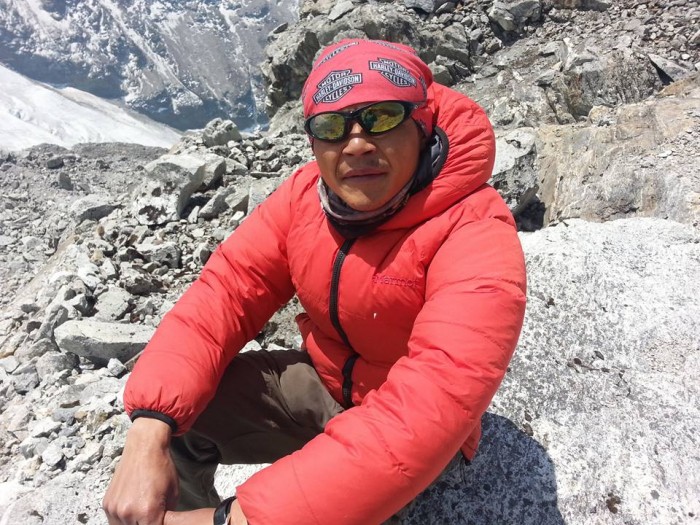Ama Dablam, known as the "Matterhorn of the Himalayas," stands as one of the most iconic peaks in Nepal. With its soaring 6,812-meter (22,349 ft) summit and elegant, sharp ridgelines, Ama Dablam is a dream climb for alpinists across the globe. The Ama Dablam Expedition 2025/26, organized by Himalayan Adventure International Treks, invites you to take part in this thrilling journey to one of the world’s most beautiful peaks.
Whether you're a seasoned climber or an ambitious adventurer preparing for future 8000-meter challenges like Everest or Manaslu, Ama Dablam offers a perfect test of skill, endurance, and high-altitude mountaineering prowess.
Ama Dablam Height and Location
Ama Dablam peak is located in the Khumbu region of eastern Nepal within Sagarmatha National Park. Its name translates to “Mother’s Necklace,” referring to the glacier (Dablam) hanging like a jewel below its summit, resembling a traditional Sherpa pendant.
At Ama Dablam height of 6,812 meters, it is not among the tallest Himalayan giants, but its technical challenges and breathtaking beauty make it a coveted summit.
Ama Dablam Expedition Itinerary
The Ama Dablam Expedition itinerary typically takes 25 to 30 days, including arrival, acclimatization, climbing, and return. Here is a sample itinerary offered by Himalayan Adventure International Treks:
Day-by-Day Itinerary
Day 1-2: Arrival in Kathmandu (1,350m), preparation, gear checks
Day 3: Flight to Lukla (2,840m), trek to Phakding
Day 4: Trek to Namche Bazaar (3,440m)
Day 5: Acclimatization in Namche
Day 6: Trek to Pangboche (3,930m)
Day 7: Trek to Ama Dablam Base Camp (4,600m)
Day 8-19: Climbing period (includes rotations and summit push)
Day 20: Descend to Pangboche
Day 21: Return to Namche Bazaar
Day 22: Trek to Lukla
Day 23: Fly to Kathmandu
Day 24-25: Buffer/reserve days and departure
This itinerary is fully customizable and includes expert guidance, porters, Sherpa support, and acclimatization hikes.
Ama Dablam Climbing Routes
The most popular Ama Dablam climbing route is the Southwest Ridge, first climbed in 1961 by Mike Gill, Barry Bishop, Mike Ward, and Wally Romanes.
This route involves:
-
Steep ice and rock climbing
-
Multiple camps (Camp I at 5,700m, Camp II at 5,900m, and Camp III at 6,300m)
-
Fixed ropes over exposed ridges
-
Technical sections like the Yellow Tower and the Mushroom Ridge
Although non-technical climbers with strong alpine experience can attempt it, it is essential to be familiar with fixed rope techniques, abseiling, and using crampons and ice axes.
How Difficult Is It to Climb Ama Dablam?
Many climbers ask: “Can a beginner climb Ama Dablam?” or “How difficult is it to climb Ama Dablam?”
Ama Dablam is not suitable for beginners. It is a technically demanding climb that requires:
-
Prior experience with high-altitude trekking or climbing (ideally above 6000m)
-
Competence in ice and rock climbing
-
Use of fixed rope systems
-
Physical and mental endurance
While it is considered less physically demanding than Everest in terms of altitude, it is technically more challenging. So, is Ama Dablam harder than Everest? – in terms of technicality, yes, but Everest is more grueling due to its extreme height and length of expedition.
Ama Dablam Success Rate
The success rate of Ama Dablam varies depending on weather, team experience, and expedition support. Guided expeditions, such as those organized by Himalayan Adventure International Treks, boast a success rate of around 80%.
Proper acclimatization, preparation, and expert Sherpa guidance significantly enhance the chance of summiting safely.
Ama Dablam Death Rate
Despite its popularity, Ama Dablam has seen tragic accidents due to avalanches, altitude sickness, and falls. However, with increased safety measures, the Ama Dablam death rate remains relatively low compared to 8000-meter peaks.
Most fatalities occurred due to natural hazards or unprepared attempts. This is why choosing an experienced team like Himalayan Adventure International Treks with professional guides and detailed risk management protocols is crucial.
How Many Days to Climb Ama Dablam?
From Ama Dablam Base Camp, the climb typically takes 12 to 14 days, including rotations for acclimatization, setting up camps, and a summit attempt.
In total, including travel and rest, climbers should allow 3 to 4 weeks for the full expedition.
How Much Does the Ama Dablam Expedition Cost?
The Ama Dablam Expedition 2025 cost depends on the services, support, and logistics provided. With Himalayan Adventure International Treks, you can expect:
-
Full-service guided expedition
-
Logistics and permits
-
Accommodation, food, base camp services
-
Expert guides and Sherpa support
🏔️ Ama Dablam Expedition Price (2025/26):
-
Standard Package: $6,800 – $7,500 USD
-
Premium Package (with extra services): $8,000 – $9,500 USD
This ama dablam expedition price is competitive and includes everything from Kathmandu to Kathmandu.
Ama Dablam Permit Cost
So, how much is the permit for Ama Dablam? The Nepal Mountaineering Association (NMA) regulates climbing permits. The Ama Dablam permit cost varies by season:
Additionally, there are fees for liaison officers, garbage deposits, and park entry fees. These are typically included in ama dablam climbing prices offered by professional operators.
Ama Dablam vs. Everest – A Comparison
| Feature |
Ama Dablam |
Everest |
| Height |
6,812m |
8,848.86m |
| Technical Difficulty |
High (steep rock/ice) |
Moderate (snow, altitude) |
| Expedition Duration |
25–30 days |
60+ days |
| Death Rate |
Lower than Everest |
Higher (especially on summit push) |
| Permit Cost |
$400 |
$11,000+ |
| Expedition Cost |
$6,800–$9,500 |
$35,000–$75,000 |
| Suitable for Beginners |
No |
With guided support – possibly |
Clearly, Ama Dablam is harder than Everest in terms of technical difficulty, while Everest poses more challenges due to its height and extreme conditions.
Cost of Climbing Ama Dablam – Full Breakdown
Here is a transparent view of Ama Dablam climb expedition cost with Himalayan Adventure International Treks:
| Item |
Estimated Cost (USD) |
| Climbing Permit |
$400 |
| Liaison Officer & Logistics |
$500 |
| Kathmandu Accommodation |
$300 |
| Flights (Kathmandu-Lukla) |
$400 |
| Trekking and Base Camp Setup |
$1,000 |
| Climbing Sherpa (1:1 ratio) |
$2,000 |
| Meals & Lodging (Trek + Climb) |
$700 |
| Base Camp Services (tents, cooks, porters) |
$1,200 |
| Insurance & Emergency Support |
$500 |
| Total Estimate |
$7,000 – $9,000 |
This comprehensive Ama Dablam listing is ideal for climbers seeking value, safety, and quality service.
Why Choose Himalayan Adventure International Treks?
We provide professionally organized expeditions with a focus on safety, personalized service, and local expertise. Here’s what sets us apart:
✅ Experienced Sherpa guides with multiple Ama Dablam summits
✅ 24/7 medical support & satellite communications
✅ Flexible itineraries with acclimatization built-in
✅ Premium Base Camp service with solar-powered amenities
✅ Transparent pricing – no hidden charges
Preparing for Ama Dablam Expedition 2025/26
Before signing up for your Ama Dablam Expedition 2025/26, ensure you:
-
Train in alpine conditions and carry a backpack of 10-15kg
-
Practice fixed rope climbing and abseiling
-
Acclimatize with 5000-6000m climbs like Lobuche East or Island Peak
-
Invest in gear (or rent in Kathmandu)
Combine with Other Expeditions
Want to warm up with other climbs? Combine Ama Dablam with:
-
Island Peak (6,189m) – beginner-friendly
-
Manaslu Expedition – 8,163m climb; cost: $14,000–$18,000
-
Everest Expedition – 8,848.86m; cost: $35,000–$75,000
Your Next Great Climb Awaits
The Ama Dablam Expedition 2025/26 with Himalayan Adventure International Treks offers climbers the ultimate Himalayan experience: pristine beauty, technical challenge, and unforgettable moments with a professional support team.
This is more than a climb – it’s a journey into the heart of the Himalayas, surrounded by legends, monks, prayer flags, and panoramic peaks.
Book your spot today and stand on top of one of the world’s most iconic summits – Ama Dablam.

 Plan Your Trip Now
Plan Your Trip Now 


